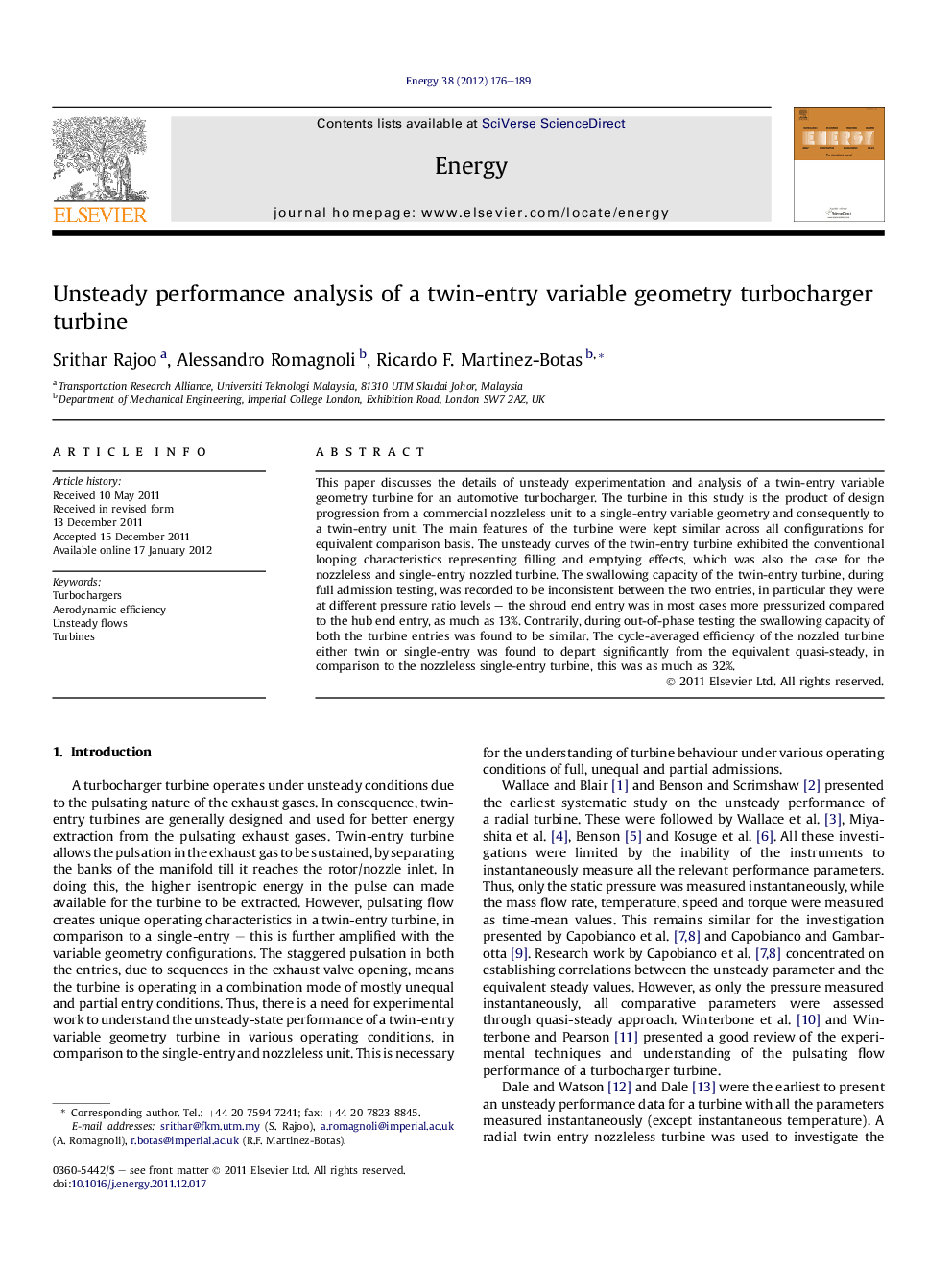| Article ID | Journal | Published Year | Pages | File Type |
|---|---|---|---|---|
| 1733875 | Energy | 2012 | 14 Pages |
This paper discusses the details of unsteady experimentation and analysis of a twin-entry variable geometry turbine for an automotive turbocharger. The turbine in this study is the product of design progression from a commercial nozzleless unit to a single-entry variable geometry and consequently to a twin-entry unit. The main features of the turbine were kept similar across all configurations for equivalent comparison basis. The unsteady curves of the twin-entry turbine exhibited the conventional looping characteristics representing filling and emptying effects, which was also the case for the nozzleless and single-entry nozzled turbine. The swallowing capacity of the twin-entry turbine, during full admission testing, was recorded to be inconsistent between the two entries, in particular they were at different pressure ratio levels – the shroud end entry was in most cases more pressurized compared to the hub end entry, as much as 13%. Contrarily, during out-of-phase testing the swallowing capacity of both the turbine entries was found to be similar. The cycle-averaged efficiency of the nozzled turbine either twin or single-entry was found to depart significantly from the equivalent quasi-steady, in comparison to the nozzleless single-entry turbine, this was as much as 32%.
► Performance assessment of energy conversion in a turbocharger turbine under unsteady flows. ► Comparison of performance between a quasi-steady approach and an unsteady analysis. ► Differences between single and twin-entry variable geometry turbocharger turbines under unsteady flows. ► Effect of engine pulse amplitude on the flow capacity and efficiency of different turbocharger turbine configurations.
